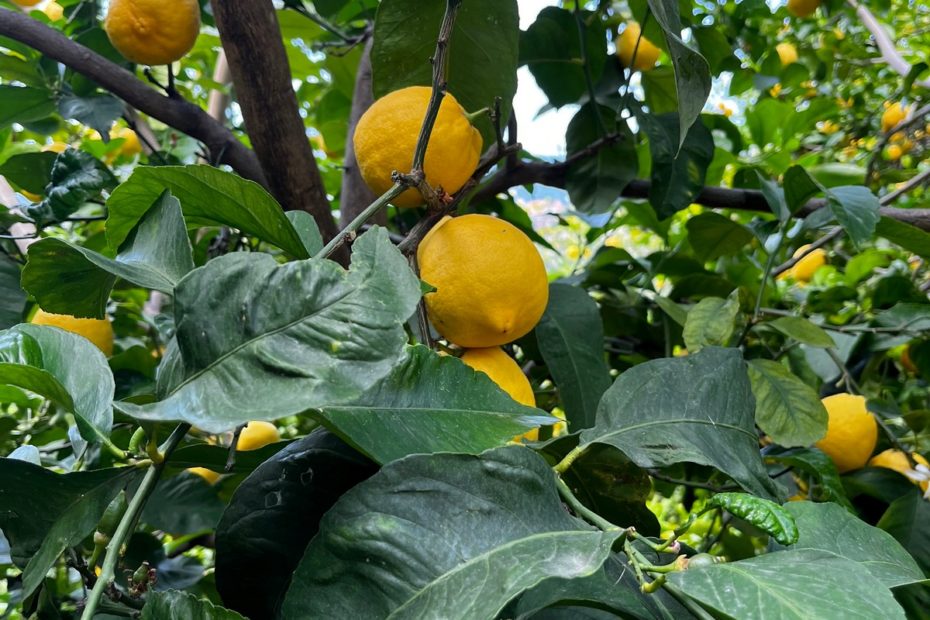Lemons are probably not the first thing that comes to mind when you think of AOC or AOP products. Definitely wines, probably cheeses, but lemons?
We got to tour one of Menton’s designated AOP (Appellation d’origine protégée*) lemon orchards and learned what it takes to become an AOP lemon. It’s not as easy as planting some trees and picking some lemons.
The day started with a perilous ride up a narrow, very steep road, with some of the tightest switchbacks I’ve ever seen. Being in the back of the Land Rover and seeing the drop off to the bottom of the valley was not for the faint of heart.
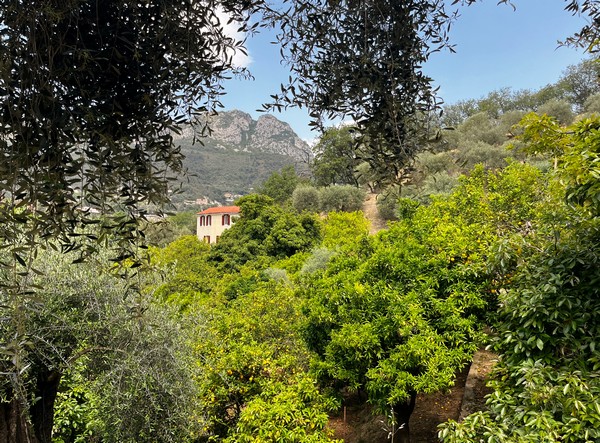 Safely delivered, we were treated to refreshing glasses of lemon water before we set off on our tour. The farm is perched on the side of a very steep hill, with beautiful views of the surrounding hills and the Mediterranean.
Safely delivered, we were treated to refreshing glasses of lemon water before we set off on our tour. The farm is perched on the side of a very steep hill, with beautiful views of the surrounding hills and the Mediterranean.
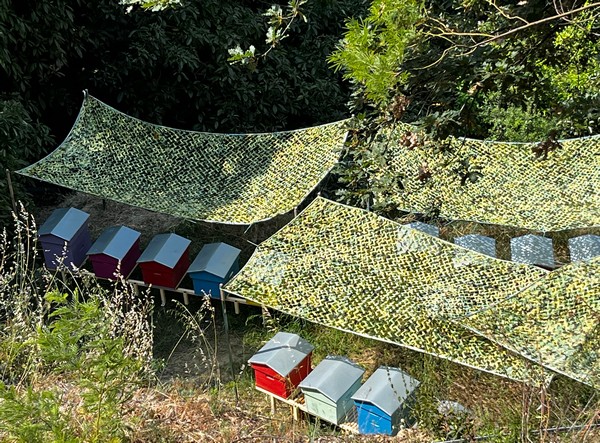 The first stop on the trail was a look at the bees. They have an area of multi-colored hives. The bees recognize the color and know which one is their home. Last year, having the bees gave them 30% more fruit, but this year they’re worried because the Asian hornets have killed off a lot of the bees—they’re capable of eating 80 bees a day, so the colonies have been decimated.
The first stop on the trail was a look at the bees. They have an area of multi-colored hives. The bees recognize the color and know which one is their home. Last year, having the bees gave them 30% more fruit, but this year they’re worried because the Asian hornets have killed off a lot of the bees—they’re capable of eating 80 bees a day, so the colonies have been decimated.
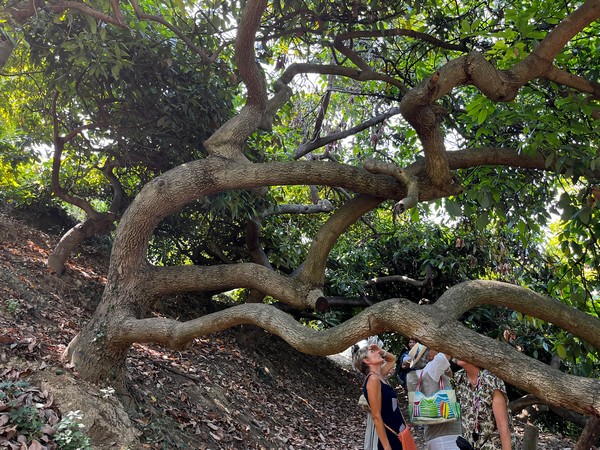 Mixed in with the lemons are avocado trees, some of which are over 100 years old. The avocados are larger with a thinner skin than the Haas avocados we’re used to. Because the hillside has cooler temperatures they say that it makes for tastier avocados. I tried one, and it was good, but I don’t know if it was tastier than a good Haas.
Mixed in with the lemons are avocado trees, some of which are over 100 years old. The avocados are larger with a thinner skin than the Haas avocados we’re used to. Because the hillside has cooler temperatures they say that it makes for tastier avocados. I tried one, and it was good, but I don’t know if it was tastier than a good Haas.
Lemon trees run up and down the hillsides. It takes 10 years before they’ll give fruit, so the orchard is always adding younger trees to the mix. To give them strength, they graft them with bergamot (which gives Earl Grey tea its flavor). And all the farming is biodynamic, which means they plant the trees and pick the fruit according to the lunar cycle.
 But what makes the lemons AOP? A lot of hard work. The lemons aren’t picked, they have to be cut and must include the stem and a leaf. If the majority of the day’s harvest doesn’t have leaves and stems, the following day the entire crop must have leaves and stems. Doing that on a steep hillside makes a hard job harder.
But what makes the lemons AOP? A lot of hard work. The lemons aren’t picked, they have to be cut and must include the stem and a leaf. If the majority of the day’s harvest doesn’t have leaves and stems, the following day the entire crop must have leaves and stems. Doing that on a steep hillside makes a hard job harder.
Our guide told us we should always buy lemons with the stems and leaves (easily done here, but not in the US). You sharply fold the leaves and smell them; they should smell strongly like lemons—that will ensure a flavorful lemon. The government sends inspectors around 4 times a year to test and make sure the lemons are from approved trees.
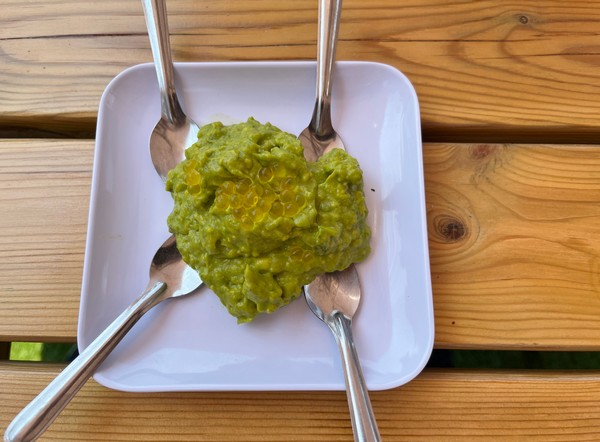 After scrambling around the hillside, we sat down for lunch. Guacamole was the starter, topped with a “lemon caviar”; delicious if not traditional. In a more traditional mode, there was a pan bagnat, and for dessert, tarte au citron (of course).
After scrambling around the hillside, we sat down for lunch. Guacamole was the starter, topped with a “lemon caviar”; delicious if not traditional. In a more traditional mode, there was a pan bagnat, and for dessert, tarte au citron (of course).
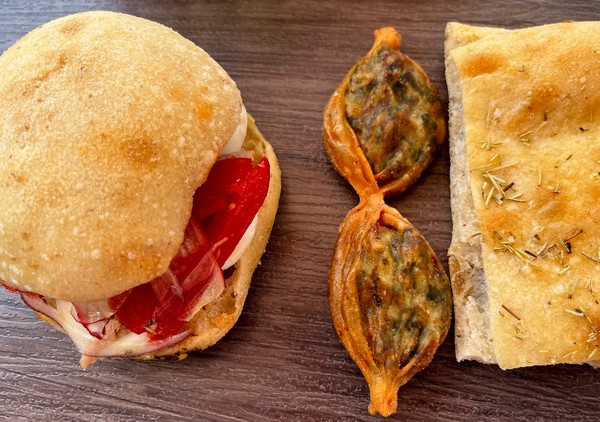 It was a long day, but so interesting! I brought a couple of lemons, an avocado, some lemon caviar and a bottle of their mandarin olive oil home to play with. More about that soon!
It was a long day, but so interesting! I brought a couple of lemons, an avocado, some lemon caviar and a bottle of their mandarin olive oil home to play with. More about that soon!
To book a tour, click here (and wear sturdy shoes!).
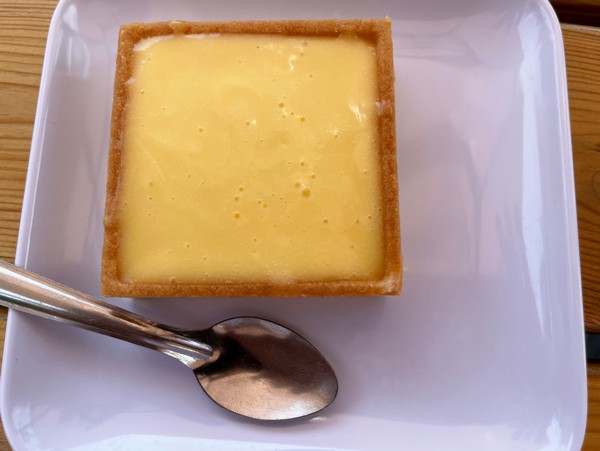
*This “designates products that have been produced, processed and elaborated in a specific geographical area, using the recognized know-how of local producers and ingredients from the region concerned”.
